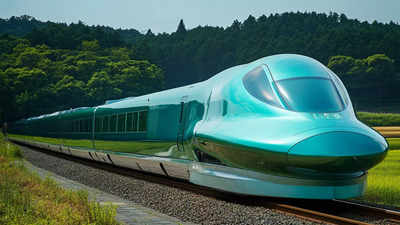India's First Bullet Train Design Nears Finalization
India and Japan are on the verge of finalizing the design specifications for the Mumbai-Ahmedabad High-Speed Rail (MAHSR) Corridor, a significant step towards the tender process. The renowned Japanese Shinkansen trains are undergoing modifications to better suit Indian conditions, including enhanced luggage capacity and the ability to function in extreme temperatures exceeding 50 degrees Celsius. These trains are also being adapted to handle India's unique dust conditions.

A senior official shared, "These designs are expected to be formally approved soon." Additionally, the seating arrangement may be reconfigured, potentially reducing the number of seats per coach compared to the original design.
Progress on the MAHSR Corridor
Civil construction on the MAHSR corridor has surpassed the 50% mark across Gujarat, Maharashtra, and Dadra and Nagar Haveli. Rail welding operations commenced on Gujarat's MAHSR viaducts this month. Japanese-sourced rails extending over 60 km have been installed, marking a significant milestone.
Indian Railways is simultaneously developing domestic manufacturing capabilities for bullet trains and signaling systems suitable for high-speed rail corridors, while continuing to import from Japan.
Future of High-Speed Rail in India
The Integral Coach Factory (ICF) has received instructions from the Railway Board to produce bullet trains capable of 280 kmph speeds. ICF has partnered with BEML for manufacturing these trains, with a project cost of Rs 866.87 crore and individual coach cost of Rs 27.86 crore. The contract includes design expenses, development costs, non-recurring charges, and infrastructure for testing.
BEML plans to manufacture these trainsets at their Bengaluru rail coach facility, with delivery scheduled by 2026. The trains will feature complete air-conditioning with chair car arrangements, along with contemporary amenities like adjustable reclining seats, facilities for passengers with mobility challenges, and entertainment systems.









Comments